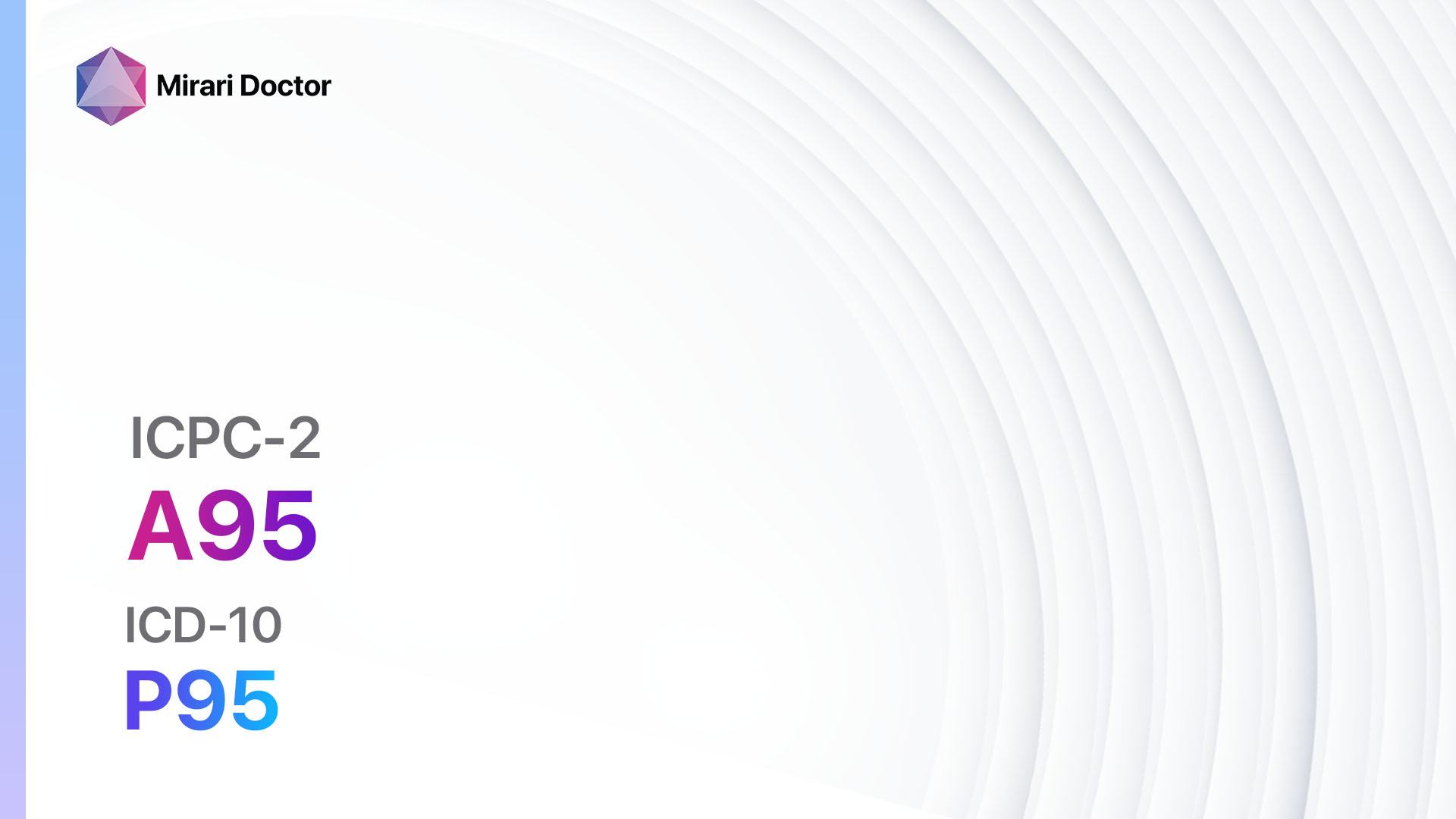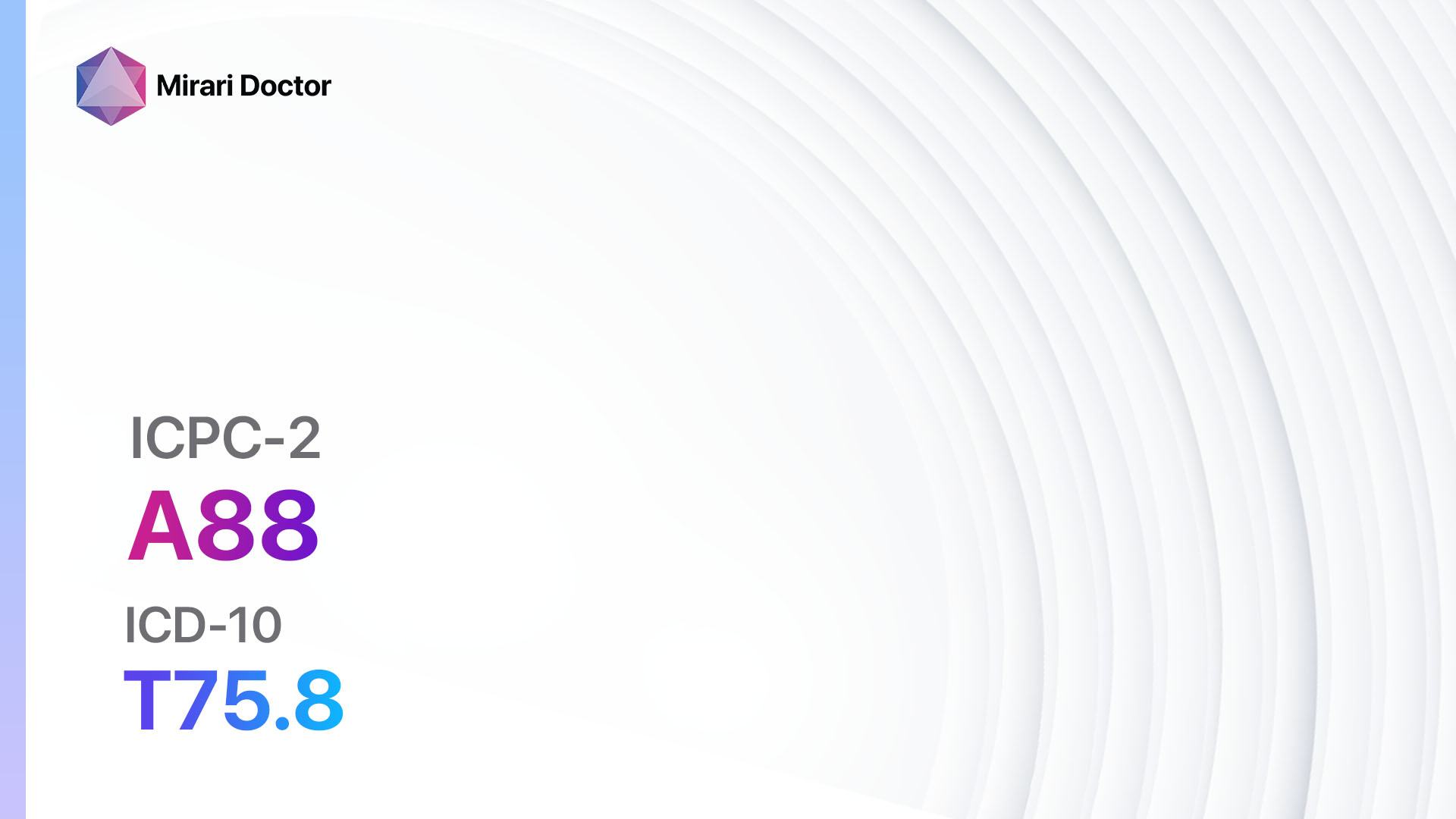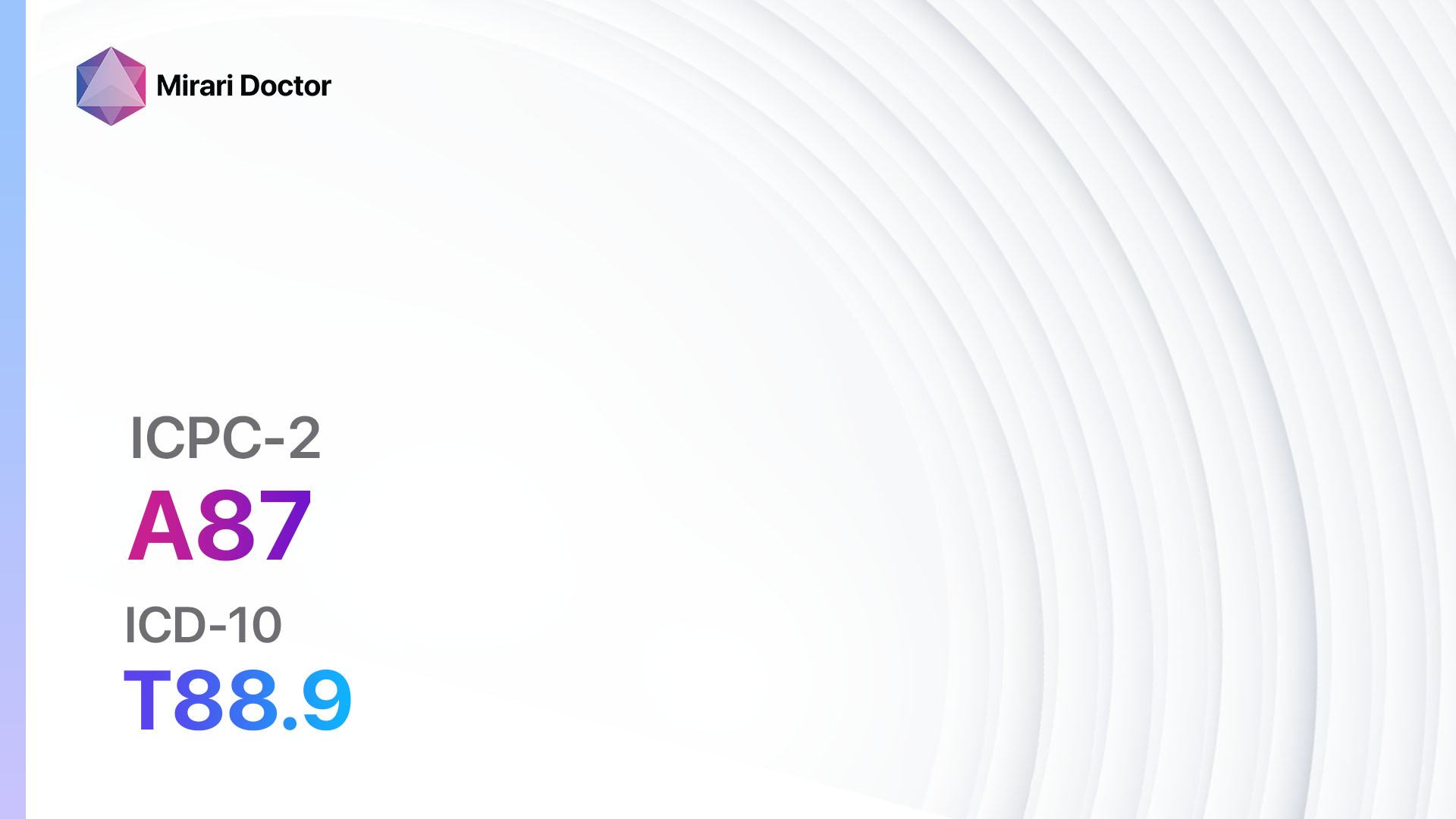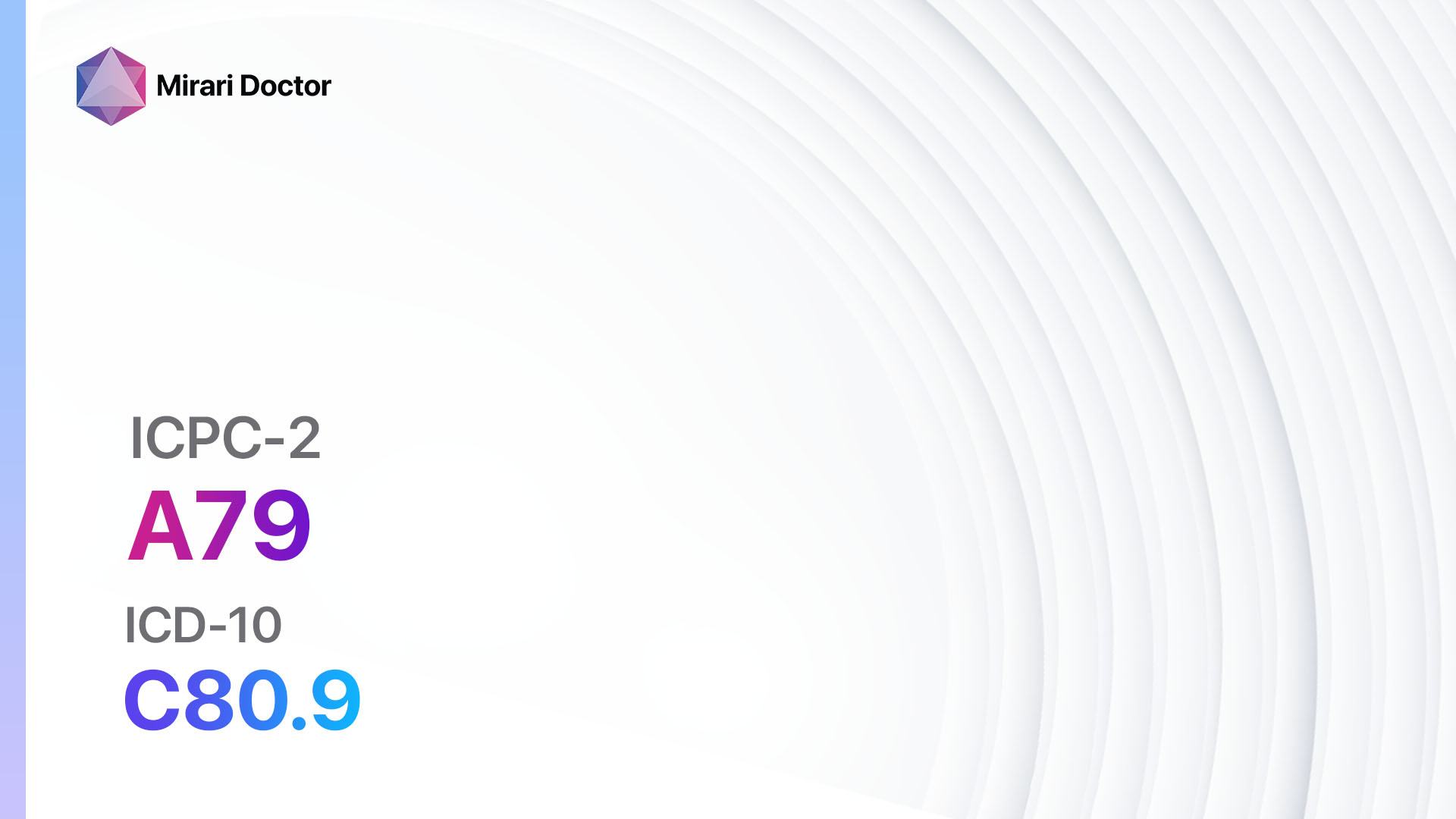
Introduction
Fear of other disease NOS, also known as nosophobia, is a condition characterized by an excessive and irrational fear of developing a serious illness or disease[1][2]. This fear can significantly impact a person’s daily life, causing distress and anxiety[3]. The aim of this guide is to provide healthcare professionals with a comprehensive approach to diagnosing and managing fear of other disease NOS.
Codes
- ICPC-2 Code: A27 Fear of other disease NOS
- ICD-10 Code: Z71.1 Person with feared complaint in whom no diagnosis is made
Symptoms
- Excessive worry about developing a serious illness or disease[4]
- Preoccupation with bodily sensations or minor symptoms[5]
- Frequent checking of the body for signs of illness[6]
- Avoidance of medical tests or procedures due to fear of receiving a diagnosis[7]
- Impaired daily functioning due to fear and anxiety[8]
Causes
The exact cause of fear of other disease NOS is unknown. However, several factors may contribute to the development of this condition, including:
- Previous traumatic medical experiences[9]
- Family history of anxiety disorders or hypochondria[10]
- High levels of stress or anxiety
- Personality traits, such as neuroticism or perfectionism
- Media influence and exposure to medical information
Diagnostic Steps
Medical History
- Conduct a detailed medical history to gather information about the patient’s symptoms, duration, and impact on daily life.
- Inquire about any previous medical diagnoses or traumatic experiences related to illness.
- Assess for any family history of anxiety disorders or hypochondria.
- Evaluate the patient’s level of stress and anxiety in their daily life.
Physical Examination
- Perform a thorough physical examination to rule out any physical causes for the patient’s symptoms.
- Pay attention to any signs of anxiety or distress during the examination.
- Document any findings that may be relevant to the patient’s fear of other disease NOS.
Laboratory Tests
- No specific laboratory tests are available for diagnosing fear of other disease NOS.
- However, blood tests may be performed to rule out any underlying medical conditions that could be contributing to the patient’s symptoms.
Diagnostic Imaging
- Diagnostic imaging is not typically necessary for diagnosing fear of other disease NOS.
- However, in some cases, imaging studies may be ordered to rule out any physical causes for the patient’s symptoms.
Other Tests
- No other specific diagnostic tests are available for fear of other disease NOS.
- However, additional tests may be ordered based on the patient’s clinical presentation and to rule out other medical conditions.
Follow-up and Patient Education
- Schedule regular follow-up appointments to monitor the patient’s progress and provide ongoing support.
- Offer patient education materials or resources on anxiety management techniques and coping strategies.
- Encourage the patient to seek therapy or counseling to address their fear and anxiety.
Possible Interventions
Traditional Interventions
Medications:
Top 5 drugs for fear of other disease NOS:
- Selective serotonin reuptake inhibitors (SSRIs) (e.g., Fluoxetine, Sertraline):
- Cost: Generic versions can be $3-$50/month.
- Contraindications: Hypersensitivity to SSRIs, concurrent use of MAO inhibitors.
- Side effects: Nausea, headache, insomnia.
- Severe side effects: Serotonin syndrome, suicidal thoughts.
- Drug interactions: MAO inhibitors, NSAIDs, other serotonergic drugs.
- Warning: May take several weeks to achieve full therapeutic effect.
- Benzodiazepines (e.g., Alprazolam, Diazepam):
- Cost: Generic versions can be $4-$30/month.
- Contraindications: Acute narrow-angle glaucoma, severe respiratory insufficiency.
- Side effects: Sedation, dizziness, confusion.
- Severe side effects: Respiratory depression, dependence.
- Drug interactions: Alcohol, opioids, other CNS depressants.
- Warning: Potential for dependence and withdrawal symptoms.
- Beta-blockers (e.g., Propranolol, Atenolol):
- Cost: Generic versions can be $4-$30/month.
- Contraindications: Severe bradycardia, heart block, uncontrolled heart failure.
- Side effects: Fatigue, dizziness, bradycardia.
- Severe side effects: Bronchospasm, heart block.
- Drug interactions: Calcium channel blockers, insulin.
- Warning: Should not be abruptly stopped.
- Antidepressants (e.g., Venlafaxine, Escitalopram):
- Cost: Generic versions can be $4-$50/month.
- Contraindications: Hypersensitivity to antidepressants, concurrent use of MAO inhibitors.
- Side effects: Nausea, headache, sexual dysfunction.
- Severe side effects: Serotonin syndrome, suicidal thoughts.
- Drug interactions: MAO inhibitors, NSAIDs, other serotonergic drugs.
- Warning: May take several weeks to achieve full therapeutic effect.
- Antipsychotics (e.g., Quetiapine, Risperidone):
- Cost: Generic versions can be $4-$50/month.
- Contraindications: Hypersensitivity to antipsychotics, dementia-related psychosis.
- Side effects: Sedation, weight gain, extrapyramidal symptoms.
- Severe side effects: Neuroleptic malignant syndrome, tardive dyskinesia.
- Drug interactions: Anticholinergic drugs, CNS depressants.
- Warning: Increased risk of mortality in elderly patients with dementia-related psychosis.
Alternative Drugs:
- Buspirone: An anxiolytic medication that does not cause sedation or dependence.
- Hydroxyzine: An antihistamine with anxiolytic properties.
- Pregabalin: An anticonvulsant medication used for anxiety disorders.
- Gabapentin: Another anticonvulsant medication with anxiolytic effects.
- Mirtazapine: An atypical antidepressant that can help with anxiety and sleep.
Surgical Procedures:
- Surgical procedures are not indicated for the treatment of fear of other disease NOS.
Alternative Interventions
- Cognitive-behavioral therapy (CBT): A form of psychotherapy that helps individuals identify and change negative thought patterns and behaviors. Cost: $100-$200 per session.
- Exposure therapy: A type of CBT that involves gradually exposing the patient to their feared situations or thoughts. Cost: $100-$200 per session.
- Mindfulness-based stress reduction (MBSR): A meditation-based program that teaches individuals to focus on the present moment and reduce anxiety. Cost: $200-$400 for an 8-week program.
- Relaxation techniques: Techniques such as deep breathing, progressive muscle relaxation, and guided imagery can help reduce anxiety. Cost: Varies (self-guided or with the assistance of a therapist).
- Support groups: Joining a support group with individuals who have similar fears can provide a sense of community and understanding. Cost: Varies (some groups may be free, while others may have a small fee).
Lifestyle Interventions
- Regular exercise: Engaging in regular physical activity can help reduce anxiety and improve overall well-being. Cost: Varies (gym membership, fitness classes, or outdoor activities).
- Healthy diet: Consuming a balanced diet rich in fruits, vegetables, whole grains, and lean proteins can support overall mental and physical health. Cost: Varies (depending on food choices and dietary preferences).
- Stress management techniques: Practicing stress management techniques such as meditation, yoga, or journaling can help reduce anxiety. Cost: Varies (self-guided or with the assistance of a therapist).
- Sleep hygiene: Establishing a consistent sleep routine and creating a sleep-friendly environment can improve sleep quality and reduce anxiety. Cost: Varies (adjustments to sleep environment or the purchase of sleep aids).
- Avoidance of triggers: Identifying and avoiding triggers that exacerbate anxiety can help manage fear of other disease NOS. Cost: None.
It is important to note that the cost ranges provided are approximate and may vary depending on the location and availability of the interventions.
Mirari Cold Plasma Alternative Intervention
Understanding Mirari Cold Plasma
- Safe and Non-Invasive Treatment: Mirari Cold Plasma is a safe and non-invasive treatment option for various skin conditions. It does not require incisions, minimizing the risk of scarring, bleeding, or tissue damage.
- Efficient Extraction of Foreign Bodies: Mirari Cold Plasma facilitates the removal of foreign bodies from the skin by degrading and dissociating organic matter, allowing easier access and extraction.
- Pain Reduction and Comfort: Mirari Cold Plasma has a local analgesic effect, providing pain relief during the treatment, making it more comfortable for the patient.
- Reduced Risk of Infection: Mirari Cold Plasma has antimicrobial properties, effectively killing bacteria and reducing the risk of infection.
- Accelerated Healing and Minimal Scarring: Mirari Cold Plasma stimulates wound healing and tissue regeneration, reducing healing time and minimizing the formation of scars.
Mirari Cold Plasma Prescription
Video instructions for using Mirari Cold Plasma Device – A27 Fear of other disease NOS (ICD-10:Z71.1)
| Mild | Moderate | Severe |
| Mode setting: 7 (Immunotherapy) Location: 1 (Sacrum) Morning: 15 minutes, Evening: 15 minutes | Mode setting: 7 (Immunotherapy) Location: 1 (Sacrum) Morning: 30 minutes, Lunch: 30 minutes, Evening: 30 minutes | Mode setting: 7 (Immunotherapy) Location: 1 (Sacrum) Morning: 30 minutes, Lunch: 30 minutes, Evening: 30 minutes |
| Mode setting: 7 (Immunotherapy) Location: 4 (Heart, Bile & Pancreas) Morning: 15 minutes, Evening: 15 minutes | Mode setting: 7 (Immunotherapy) Location: 4 (Heart, Bile & Pancreas) Morning: 30 minutes, Lunch: 30 minutes, Evening: 30 minutes | Mode setting: 7 (Immunotherapy) Location: 4 (Heart, Bile & Pancreas) Morning: 30 minutes, Lunch: 30 minutes, Evening: 30 minutes |
| Mode setting: 7 (Immunotherapy) Location: 7 (Neuro system & ENT) Morning: 15 minutes, Evening: 15 minutes | Mode setting: 7 (Immunotherapy) Location: 7 (Neuro system & ENT) Morning: 30 minutes, Lunch: 30 minutes, Evening: 30 minutes | Mode setting: 7 (Immunotherapy) Location: 7 (Neuro system & ENT) Morning: 30 minutes, Lunch: 30 minutes, Evening: 30 minutes |
| Total Morning: 60 minutes approx. $10 USD, Evening: 60 minutes approx. $10 USD | Total Morning: 120 minutes approx. $20 USD, Lunch: 120 minutes approx. $20 USD, Evening: 120 minutes approx. $20 USD, | Total Morning: 120 minutes approx. $20 USD, Lunch: 120 minutes approx. $20 USD, Evening: 120 minutes approx. $20 USD, |
| Usual treatment for 7-60 days approx. $140 USD – $1200 USD | Usual treatment for 6-8 weeks approx. $2,520USD – $3,360 USD | Usual treatment for 3-6 months approx. $5,400 USD – $10,800 USD |
 |
|
Use the Mirari Cold Plasma device to treat Fear of other disease NOS effectively.
WARNING: MIRARI COLD PLASMA IS DESIGNED FOR THE HUMAN BODY WITHOUT ANY ARTIFICIAL OR THIRD PARTY PRODUCTS. USE OF OTHER PRODUCTS IN COMBINATION WITH MIRARI COLD PLASMA MAY CAUSE UNPREDICTABLE EFFECTS, HARM OR INJURY. PLEASE CONSULT A MEDICAL PROFESSIONAL BEFORE COMBINING ANY OTHER PRODUCTS WITH USE OF MIRARI.
Step 1: Cleanse the Skin
- Start by cleaning the affected area of the skin with a gentle cleanser or mild soap and water. Gently pat the area dry with a clean towel.
Step 2: Prepare the Mirari Cold Plasma device
- Ensure that the Mirari Cold Plasma device is fully charged or has fresh batteries as per the manufacturer’s instructions. Make sure the device is clean and in good working condition.
- Switch on the Mirari device using the power button or by following the specific instructions provided with the device.
- Some Mirari devices may have adjustable settings for intensity or treatment duration. Follow the manufacturer’s instructions to select the appropriate settings based on your needs and the recommended guidelines.
Step 3: Apply the Device
- Place the Mirari device in direct contact with the affected area of the skin. Gently glide or hold the device over the skin surface, ensuring even coverage of the area experiencing.
- Slowly move the Mirari device in a circular motion or follow a specific pattern as indicated in the user manual. This helps ensure thorough treatment coverage.
Step 4: Monitor and Assess:
- Keep track of your progress and evaluate the effectiveness of the Mirari device in managing your Fear of other disease NOS. If you have any concerns or notice any adverse reactions, consult with your health care professional.
Note
This guide is for informational purposes only and should not replace the advice of a medical professional. Always consult with your healthcare provider or a qualified medical professional for personal advice, diagnosis, or treatment. Do not solely rely on the information presented here for decisions about your health. Use of this information is at your own risk. The authors of this guide, nor any associated entities or platforms, are not responsible for any potential adverse effects or outcomes based on the content.
Mirari Cold Plasma System Disclaimer
- Purpose: The Mirari Cold Plasma System is a Class 2 medical device designed for use by trained healthcare professionals. It is registered for use in Thailand and Vietnam. It is not intended for use outside of these locations.
- Informational Use: The content and information provided with the device are for educational and informational purposes only. They are not a substitute for professional medical advice or care.
- Variable Outcomes: While the device is approved for specific uses, individual outcomes can differ. We do not assert or guarantee specific medical outcomes.
- Consultation: Prior to utilizing the device or making decisions based on its content, it is essential to consult with a Certified Mirari Tele-Therapist and your medical healthcare provider regarding specific protocols.
- Liability: By using this device, users are acknowledging and accepting all potential risks. Neither the manufacturer nor the distributor will be held accountable for any adverse reactions, injuries, or damages stemming from its use.
- Geographical Availability: This device has received approval for designated purposes by the Thai and Vietnam FDA. As of now, outside of Thailand and Vietnam, the Mirari Cold Plasma System is not available for purchase or use.
References
- Drlogy. (2024). Nosophobia (Fear of Disease): Causes, Symptoms & Treatment. Retrieved from //drlogy.com/health/nosophobia-fear-of-disease
- Healthline. (n.d.). Nosophobia, or Fear of Disease: Diagnosis, Treatment, More. Retrieved from //www.healthline.com/health/nosophobia
- WebMD. (n.d.). Nosophobia: Fear of Getting an Illness, Related Disorders, and More. Retrieved from //www.webmd.com/anxiety-panic/what-is-nosophobia
- United We Care. (n.d.). Understanding Nosophobia to Overcome it. Retrieved from //www.unitedwecare.com/understanding-nosophobia-to-overcome-it/
- Tranceform Psychology. (n.d.). Nosophobia, Symptoms, Causes & Treatments. Retrieved from //www.tranceformpsychology.com/phobias/nosophobia.html
- Cleveland Clinic. (2022). Nosophobia (Fear of Disease): Causes, Symptoms & Treatment. Retrieved from //my.clevelandclinic.org/health/diseases/22523-nosophobia-fear-of-disease
- Cleveland Clinic. (2021). Illness Anxiety Disorder (Hypochondria): Symptoms & Treatments. Retrieved from //my.clevelandclinic.org/health/diseases/9886-illness-anxiety-disorder-hypochondria-hypochondriasis
- Mayo Clinic. (n.d.). Illness anxiety disorder – Symptoms and causes. Retrieved from //www.mayoclinic.org/diseases-conditions/illness-anxiety-disorder/symptoms-causes/syc-20373782
- Talkspace. (n.d.). Nosophobia: The Fear of Having a Disease. Retrieved from //www.talkspace.com/mental-health/conditions/nosophobia/
- Healthline. (n.d.). Anthropophobia (Anthrophobia): Test, Treatment, and More. Retrieved from //www.healthline.com/health/anthropophobia
Related articles
Made in USA




























